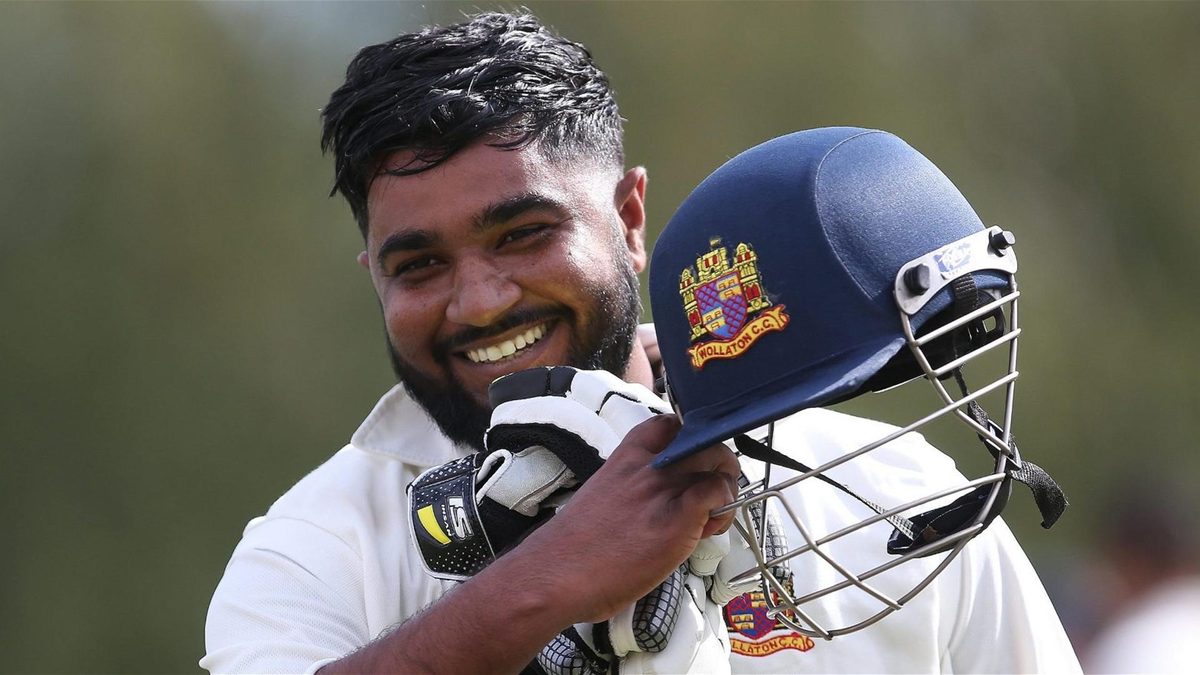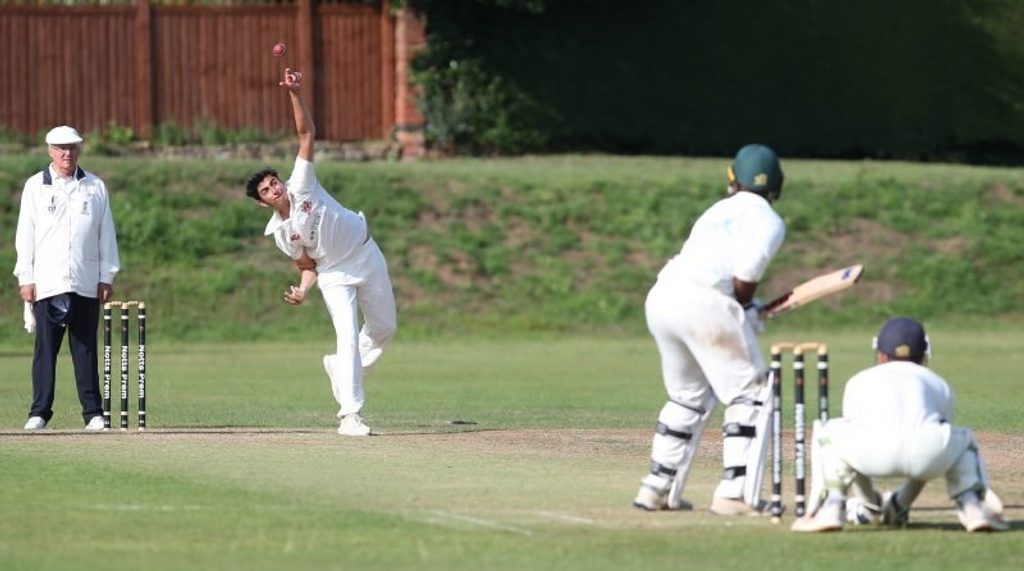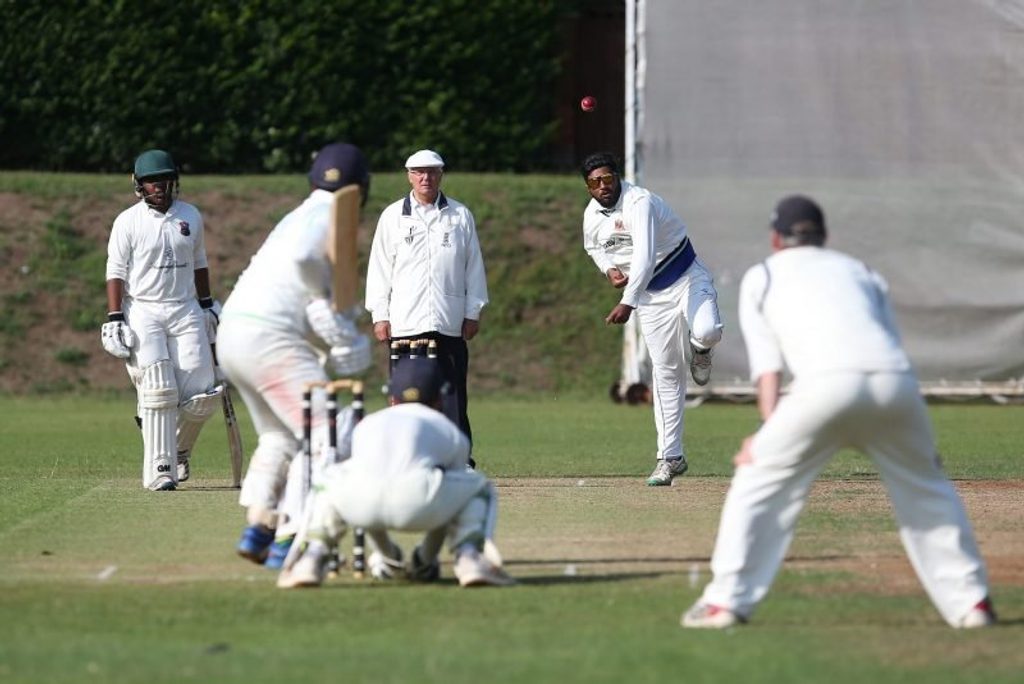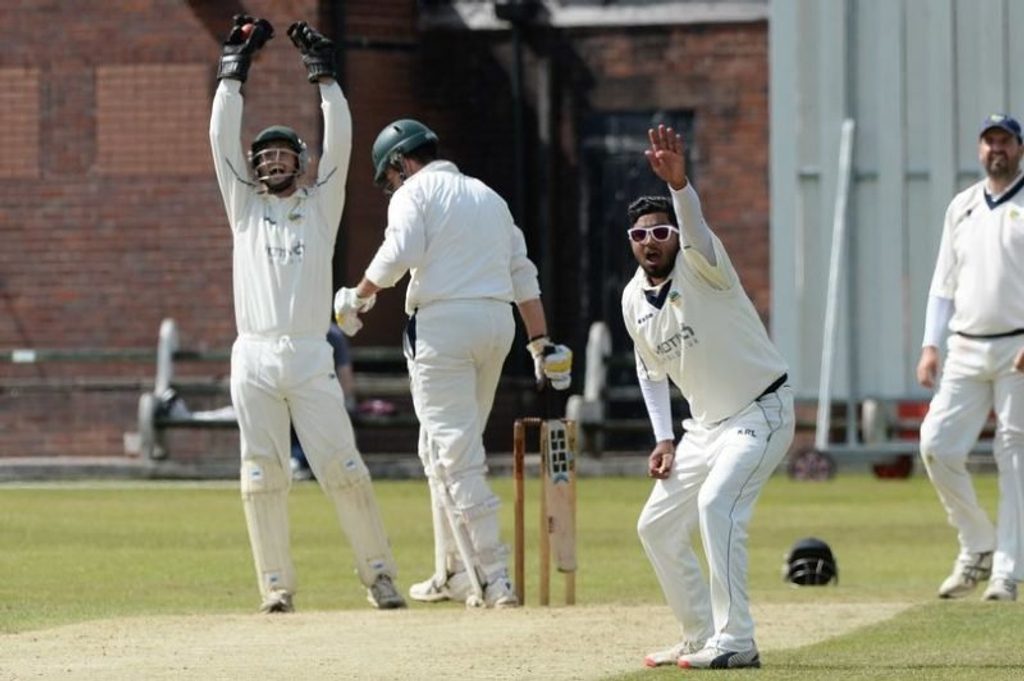
Scott Oliver tells the tale of Nayyar Abbas, who shelled out £1500 just for the chance to play club cricket, with the story taking detours into housing corruption and the changing make-up of one of the country’s most fabled club sides.
Brought to you in association with NatWest, Wisden’s Club Cricket Partner, supporting cricket at all levels for almost 40 years and a proud partner of the ECB and Chance to Shine. NatWest CricketForce helps local cricket clubs to make more from their money through free online advice and toolkits.
Many would have been the club cricketer back in April and then on into May and June, when the prospect of a cricketless summer still looked an even-money bet, who was thinking: what would I give for a game of cricket right now. Eventually, as the lockdown eased and the phased resumption of the club game was set in motion, those idle hopes became a reality. Cricket returned, but not quite as we know it: sanitation breaks and off-limits dressing rooms; ad hoc competitions with shorter games, straight win/lose rules, and no promotion or relegation; and, with the enforced belt-tightening, few paid players and no overseas pros. Well, almost no overseas pros.
In mid-July, in the town of Muridke ten miles north of Lahore in the Pakistani Punjab, Nayyar Abbas, a left-arm spinner with 80 first-class appearances and 11 seasons as an overseas pro in the English leagues was also thinking: What would I give for a game of cricket right now? Pakistan was still in lockdown, but after testing negative for Covid 19 back home, Abbas, professional at Wollaton of the Nottinghamshire Premier League, shelled out £800 for a flight from Lahore to Manchester then entered two weeks of quarantine in rented accommodation whose £650 cost he is also covering himself.
Even so, he wasn’t entirely sure he would be allowed to play when he arrived: “I confirmed my plan on July 25th, to just come and help my club as a coach. The club had already told me with no promotion or relegation they were not going to pay me. The club has a lot of young lads, so I wanted to spend some time with them and help them. But then I wondered if I was allowed to play, so they looked at my visa and I was okay. So I thought: why aren’t I playing?”
Abbas is in his third season at Wollaton, just his second professional gig after an eight-year stint with Knypersley of the North Staffordshire & South Cheshire League, where he won the Cricket World ‘Club Player of the Year’ award in 2011. His desire was to play the final month of Wollaton’s truncated NPL campaign, equating to six matches, plus one or possibly two more in the playoffs against the NPL North division. That’s £1500 to bowl a maximum of 64 overs, not that his motivation was reducible to accountancy. “I was there in Pakistan thinking there’s something missing in my life,” he says. “Now my mind is not in that place.”
Joining Abbas for his mid-August season opener, after himself quarantining for two weeks, was 37-year-old off-spinner Paul McMahon, a Wollaton youth product who spent six years on the staff at Nottinghamshire. He also skippered Oxford University, Cambridgeshire and an England U-19s team that featured the likes of Tim Bresnan, Liam Plunkett and Nick Compton, and now works as legal counsel for the ICC in Dubai. With work bringing him back to the ICC’s Lord’s office in a normal cricketing summer, judicious use of his holidays enables him to squeeze in a bloc of games back at his alma mater.
Abbas finished last year as the joint leading wicket-taker in NPL, helping Wollaton achieve their joint best-ever finish of third. Sitting alongside him on 44 wickets was teammate and fellow left-arm spinner Zain Latif, an astonishing achievement in a strong league for a 17 year old, especially when he frequently bowls in the opening powerplay. Indeed, in a list of all NPL bowlers ranked by career averages and with a minimum of 50 wickets – a list that features the likes of Alex Tudor (18th), Luke Fletcher (17th), ex-Essex quick Ricaldo Anderson (14th), Samit Patel (8th), Corey Collymore (7th), Andre Adams (3rd) and Saqlain Mushtaq (1st) – Latif sits in sixth place, one behind Abbas and five in front of McMahon.
And yet, aside from a season for Nottinghamshire U-15s in 2017, Latif hasn’t been part of the county’s academy or ‘player pathway’, not that this is necessarily Notts’ fault. Latif’s teammates say he is concerned about how his batting and fielding might hold up in a higher standard and is diffident about pushing his cause. “He doesn’t know how much he is good,” says Abbas. “He’s a very good spinner, one of the best for his age I have seen. I’m really happy with the way he’s bowling. He’s a quick learner. There’s a little problem with his fitness but he has improved that since last year. He’s working really hard. But I would like to see him play for the county second eleven. He’s definitely good enough.”
 Zain Latif in action for Wollaton (Photo by Richard Parkes)
Zain Latif in action for Wollaton (Photo by Richard Parkes)
Notts are going through a sticky patch at present, both results-wise and in terms of a minor identity crisis, with few established homegrown players and several imports over the last few years who have failed to settle, or deliver on their reputation and salary. Despite the Outlaws’ 2017 white-ball double, they have only two home County Championship Division One victories since 2015, with critics pointing to a pretty abject record in producing their own cricketers, not least from within the large South Asian community on the Trent Bridge doorstep.
No local club better represents that untapped demographic – not to mention the wider demographic shifts in club cricket among Britain’s immigrant communities – than Wollaton’s opponents for Abbas’ first game of the Covid-truncated season, Cavaliers and Carrington.
Up until 2018, the club was known as West Indian Cavaliers. Formed in 1972, and living a semi-nomadic existence before becoming permanent tenants at the Council-owned Birchover Park in the working-class suburb of Bilborough, they were a proud expression of Nottingham’s rich Caribbean heritage, a symbol of belonging and integration for a Windrush generation not always made to feel welcome, as the city’s race riots of 1958 testified.
That first year at Birchover, 1999, also marked the dawn of the Nottinghamshire Premier League, the first decade of which was dominated by Cavs, with eight titles out of ten. It was an extraordinary period of success (they also made the quarters of the National Knockout in 2007, the semis in 2003, eventually winning it in 2013), one in which the club was able to attract a host of cricketers – mainly from Caribbean backgrounds – with first-class experience, from all corners of the country. It was also a period in which Cavs’ Honorary Secretary Tyron Browne was working as Director of Operations at Nottingham City Council’s housing department, Nottingham City Homes, as it became engulfed by a corruption scandal and had its administration handed over to an external ‘Arm’s Length Management Organisation’.
Investigating the allocation of NCH housing stock between 2003 and 2005, an independent Audit Commission report in 2009 found that 700 council house offers (10 per cent) were made “manually” and outside the normal waiting list system, with a further 2000 applications showing irregularities in the points-scoring system upon which offers were based. Often, these allocations were made to people who weren’t entitled to council homes but were fast-tracked up waiting lists, in some cases after expensive repair work had been carried out, with the houses later sold to tenants at a discount under the ‘Right to Buy’ scheme. The allocation of tenancies, concluded the report, “failed to match the fair, consistent and transparent standards prospective tenants were entitled to”. Talk of a criminal investigation never materialised and no charges were ever brought against Browne, although he resigned from his position in November 2005.
 Nayyar Abbas mid-delivery (Credit: Richard Parkes)
Nayyar Abbas mid-delivery (Credit: Richard Parkes)
That season, Cavs won the NPL with a team often featuring eight or nine players with first-class and/or List A experience, but as the decade wore on and ticked over into the 2010s, the ethnic makeup of the side was slowly changing. There was a drop-off in cricketers of Caribbean heritage, for many of the same reasons as was the case elsewhere in the country: the increasing, all-consuming fascination with Premier League football, in which young black Britons were well represented and very well remunerated; no cricket on free-to-air TV; shrinking opportunities to encounter and fall in love with the game, in schools and elsewhere; and, perhaps just as importantly, the decline of the West Indies team, from the inspirational and dominant force they had been for so long to something of a rabble. Across a couple of generations, that umbilical link with the Caribbean had been erased.
In 2012, prior to the Trent Bridge Test against West Indies, the ECB organised a press junket in the deprived inner-city suburb of Hyson Green, scene of further riots in 1981 and the place where current Cavs skipper Bilal Shafayat grew up. Both Hyson Green and neighbouring suburb Radford are home to substantial West Indian communities, and this was a clear effort to connect elite cricket with those roots. Andrew Strauss, Alastair Cook and Stuart Broad, England’s Test, ODI and T20 skippers, turned out in a small, drab, almost grassless park surrounded by low railings and cheap, cheek-by-jowl housing, with minimal space for pick-up cricket games. They hit a few balls with plastic Kwik Cricket bats, answered a few questions and smiled dutifully, but the press pack far outnumbered any local onlookers, most of whom walked past uninterested.
That same summer, Cavs’ team featured three former Test cricketers: local boy Usman Afzaal, Alex Tudor and Saqlain Mushtaq. The trio were in their second season together. With NPL rules stating that anyone who had played first-class cricket in the previous two years had to be one of the two designated pros – which covered both Afzaal and Tudor – Saqlain, who lived in Leicester, had to sign a sworn affidavit in front of the league chairman confirming that he was playing as an amateur.
On the opening day of the 2011 season, a freakishly hot April day, I went down to Birchover Park to watch my old teammates from Wollaton – I had played there in 2006 and 2007 – take on this trio in their first game together. The Cavs team had five players of Asian background (including Rawait Khan, who played a handful of games for Derbyshire, and would make 116 off 93 balls), five of Caribbean background, and one white Englishman, Dominic Williamson, a regular in Leicestershire’s one-day team in the second half of the 1990s. I wanted to ask Tyron Browne about the changing ethnic composition of a team called West Indian Cavaliers and about the social and cultural shifts that had brought it about. But as I walked over, dictaphone in hand, I was intercepted by what appeared to be a sort of ‘minder’ figure and was asked what I wanted to speak to Mr Browne about – which I would imagine is a fairly unusual thing to happen when soliciting conversation with recreational cricket officialdom.
At any rate, in theory the post-merger Cavs and Carrington, now based in the well-heeled suburb of Mapperley Park, ought to be an ideal outreach club for Nottinghamshire, currently playing in a crowdless, Covid-enforced isolation at Trent Bridge – a metaphor, perhaps, for its disconnect from this local talent pool, Asian and otherwise.
Current Cavs skipper Bilal Shafayat – a teammate of McMahon’s for England Under-19s – was the first graduate of the Notts Academy, but failed to establish himself fully at Trent Bridge. Only 67 of his 154 first-class appearances, across two spells, came for the Outlaws. The last locally produced batsman – that is, one who went through the age groups and became an established first team player – was Samit Patel, who debuted in 2002.
 Wollaton CC after a joint best-ever finish of third in the NPL
Wollaton CC after a joint best-ever finish of third in the NPL
The 2020 Cavs team encountered by Abbas and McMahon – who share 101 first-class appearances between them – in their first post-quarantine game last weekend featured seven cricketers who have played first-class cricket. Another, batsman-leggie Kashif Ali from Kashmir via Bedfordshire, made two hundreds for Notts Second XI at the fag end of last summer, while the Pakistani batsman and left-arm spinner Kamran Younis – who has 76 first-class appearances and played against Shafayat, McMahon and Patel in the Under-19s World Cup of 2002 – was unavailable, although played the four previous games.
Still, not to worry. Besides Shafayat, they were able to call on Shiv Thakor, who played 51 first-class games for Leicestershire then Derbyshire, up until he was suspended then sacked, in November 2017, for indecent exposure, cutting off his living at the age of 24 and placing him on the Sex Offenders Register for five years. He has since reinvented himself as a life coach.
In addition to Thakor, there’s also Jigar Naik, eleven years on the staff at Leicestershire and 77 first-class games; Gemaal Hussein, a seamer with 34 first-class appearances who recorded match figures of 9-96 on his home debut for Gloucestershire in 2010; and Usman Arshad, from Bradford, who had four years on the staff at Durham and was for a while their go-to T20 death bowler. Cavs also have two ex-Loughborough MCCU players, Louis Kimber and Adam Tillcock, both of whom made first-class 60s against Kent last summer, while the latter made 97 not out for Notts against Bangladesh ‘A’ in his sole List A outing.
All of which suggests two things. Firstly, they would provide formidable opposition in a club game. Secondly, the club retains an incredible pulling power when it comes to former first-class cricketers from the East Midlands and further afield – players who, presumably, could still monetise their talents elsewhere in club cricket, should that be their priority. But then, the love of a club can do funny things to people – such as persuade them to travel 4000 miles for a handful of games.
Despite being 2000 miles away myself, the marvels of technology – namely, a fixed camera atop the Wollaton scorebox providing a live feed on YouTube – allowed me to watch the game, with play-cricket’s ‘Live Scores’ tab giving continually updated scores (shout out to the ‘in my day’ crew). Meanwhile, in another everyday wonder of communications technology, a WhatsApp group provided a forum to discuss the ebb and flow of the game with a couple of old teammates, Tim Young and Ed Savill, the latter having recently emigrated to Melbourne and watching on in the dead of night.
 Nayyar Abbas playing for Knypersley (Credit: The Sentinel)
Nayyar Abbas playing for Knypersley (Credit: The Sentinel)
Ed is a former First XI captain who, to the eternal tedium of teammates, reached his solitary NPL hundred back in July 2011 with a straight six off those half-decent amateur off-breaks of the aforementioned Saqlain (a story he has not so much dined out on as developed gout from). With Ed and I fancying ourselves as a pair of lo-res Brearleys, the combination of YouTube and WhatsApp, plus a real-life messenger at the game, opened up the Woolmer-esque possibility for (extremely) remote tactical input. And in a club cricket culture where, despite the lack of material reward, small advantages are increasingly sought, this might make the difference in a tight game and, ergo, in a tight championship. Of course, such input may not be entirely welcomed by the on-field skipper, but this is certainly an advancement from the analogue version of a drunken numpty with lowered inhibitions bellowing “Gerrim off!” from the top boundary. Progress of a sort.
In the end, the game’s outcome had more to do with Cavs’ greater depth than any tactical nitty-gritty. Wollaton posted a useful score of 191-7 from their 40 overs, a rusty Abbas contributing just eight (the last time the two teams had met, he made 106 and returned figures of 12-6-15-3). The total felt 15 or 20 light, and so it proved as Cavs chased down with four wickets and nine balls to spare, seeing off Abbas (8-1-21-3) through the middle overs as Wollaton ‘spent their resource’ in an attempt to get ahead of a game that looked like it might be decided on Duckworth/Lewis. Rumour has it that the tactics were queried in one WhatsApp group.
With the NPL having split into two six-team regions and eschewing promotion and relegation, there wasn’t a whole lot at stake other than the race for a top-two finish and, with that, passage to the bespoke playoff semi-finals. For a certain cherubic-faced 30-year-old spinner from just outside Lahore – playing for free, but with few freebies on offer – making the final would mean getting another eight overs out of his trip. Like everyone else, though, he was just happy to be playing.
“Wherever I go, I do very honestly my cricket,” says Abbas. “Last season we finished earlier [than Staffordshire], so I played for Knypersley as sub pro, one game, for free, before I went home. Lots of professionals, they just come and go back [without making a connection], but I want people to remember my name with good words.”
Follow @NatWest_Cricket and #NoBoundaries on Twitter to find out more
Read more club cricket stories







